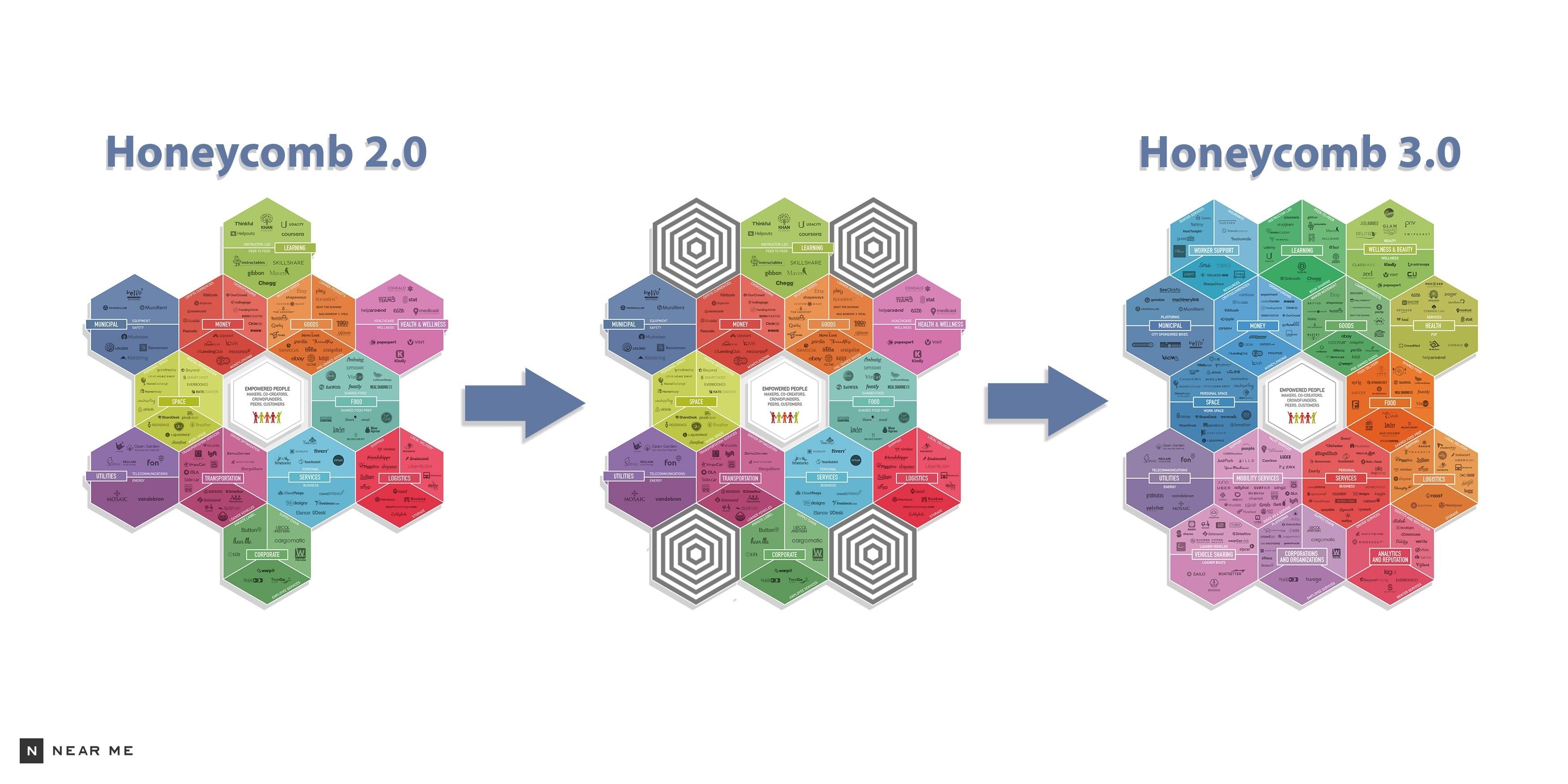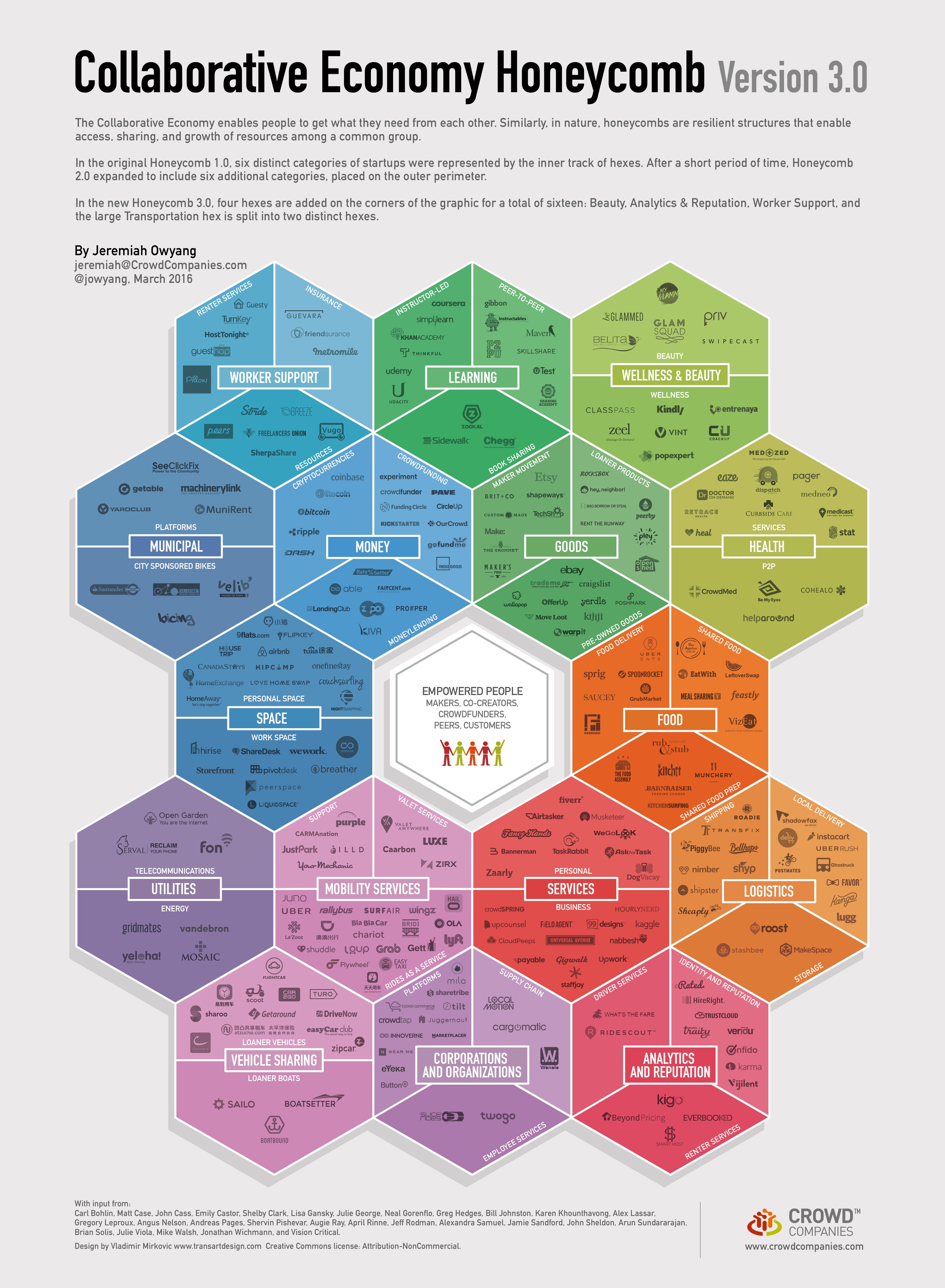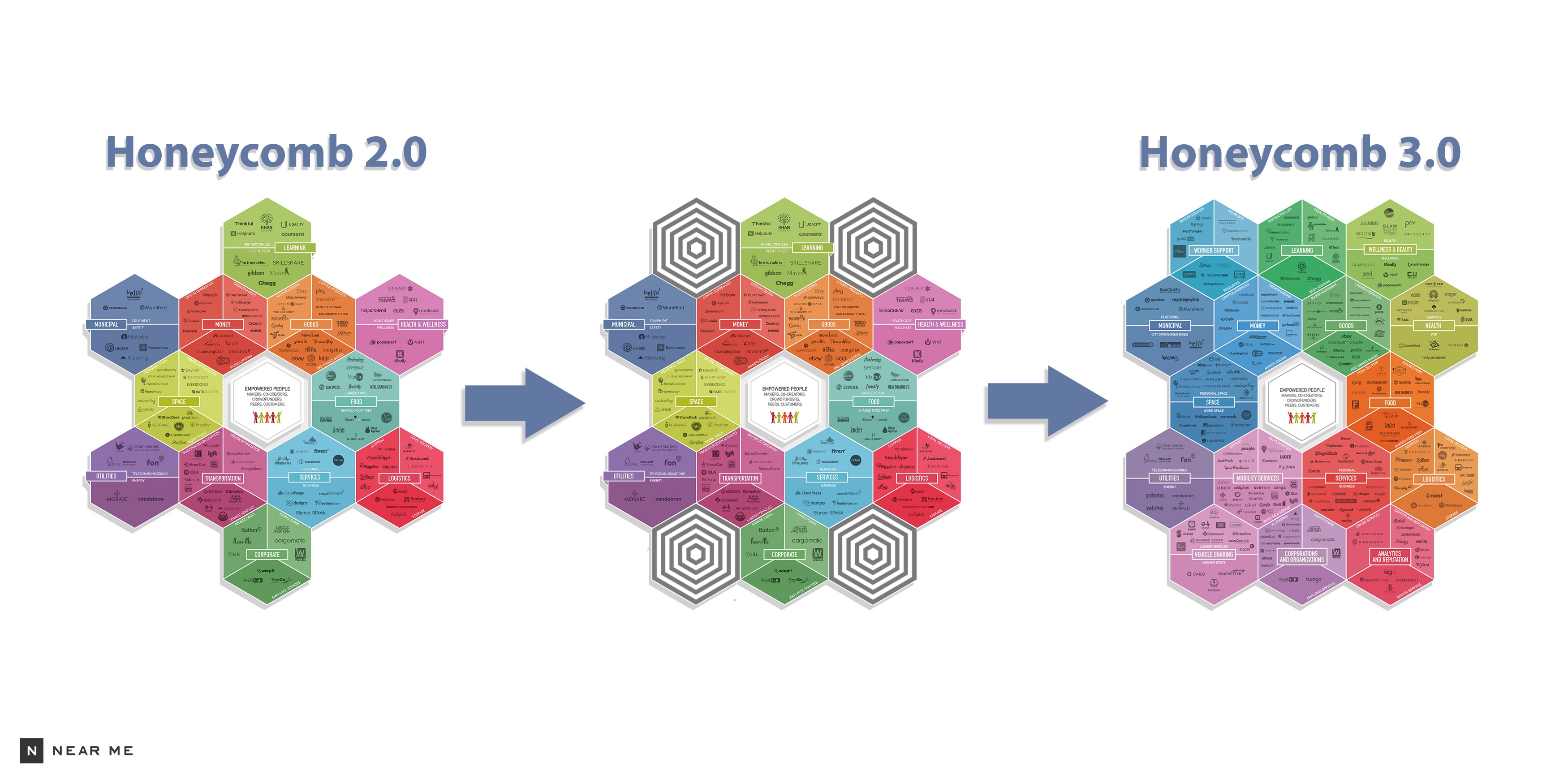The Collaborative Economy Honeycomb is Growing
CJ Todd | April 12, 2016


The Collaborative Economy has grown tremendously over the past decade. With juggernaut companies like Airbnb and Uber serving as lucrative examples, entrepreneurs from many different sectors have made their way into the space. In the third iteration of the Collaborative Economy Honeycomb, thought leader and analyst Jeremiah Owyang (@jowyang) has designed a thoughtful infographic to explain how every industry can benefit from the collaborative economy market.

To get your high resolution copy of the Collaborative Economy Honeycomb Version 3.0, click here!
Research and Design Process
In order to create a snapshot of the current “A-list” companies in the collaborative economy, Jeremiah and Crowd Companies analyzed the impacts of new and existing startups within the space. Focusing on international startups, startups on the upswing, and those receiving a lot of funding. They reviewed 460 startups and chose to include 280 in Honeycomb 3.0.
Determining which companies to include was influenced by reviewing vendors from the previous Honeycomb versions, startups included on their funding spreadsheet, the overall market and suggestions from their network. Each company was evaluated separately for meeting sharing economy criteria, its relevance to the market, its function and its location.
What’s changed since Honeycomb 2.0?

Check out the full evolution: Honeycomb 1 → Honeycomb 2 → Honeycomb 3
In the ten months after Honeycomb 2.0 was published, the collaborative economy evolved so much that a revision of the industry map was necessary. Jeremiah’s research uncovered “new trends in the sharing economy and established new categories, subcategories and some re-organization of previously established categories.”
New categories
- “Worker Support”
- “Analytics & Reputation”
Re-organized categories
- “Health & Wellness” split into “Wellness & Beauty” and “Health”
- “Transportation” split into “Mobility Services” and “Vehicle Sharing”
- “Corporate” changed to “Corporations & Organizations”
New subcategories provide a clearer understanding of each company’s business model and value proposition. With all the terms currently associated with the collaborative economy, it’s important to grasp precisely how each company works to avoid diluting the understanding of what the collaborative economy actually is. Rachel Botsman outlines these terms in Defining The Sharing Economy: What Is Collaborative Consumption - And What Isn’t?
What might be different in Collaborative Economy Honeycomb 4.0?

There is considerable technology that empowers peer-to-peer exchange, which is succeeding at creating a secondary market for users to buy, sell, rent or swap goods and services amongst each other.
Enterprise brands are no longer ignoring the value of peer-to-peer exchange. In an interview with The Marketing Journal, Jeremiah explained that a few traditional companies have already started integrating collaborative initiatives in order to compete. “Ford, Home Depot, Whole Foods, and Farmers Insurance have adopted strategies to take advantage of [the] new peer-to-peer opportunities… and have thrived.”
Peer-to-peer exchange is all about community. Collaborative economy startups often invest lots of time and money into community growth initiatives, even before their marketplace launches. In many cases, a community already exists around a traditional brand’s product or service.
Enterprise simply needs to develop a secondary marketplace to offer their already-existing community a secure environment to interact and exchange. A great example is Intel’s new Developer Community, where developers around the world share and collaborate on technical projects.It benefits the company by giving them access to conversations and data on the complete lifecycle of their products, services and customers to influence marketing and engagement.
Creating a peer-to-peer marketplace will also bring entirely new revenue stream, which in some cases is more lucrative than their primary revenue focus. (eg: the sports collectibles after-market).
If enterprise business innovates the way it should, I believe that this shift will be a major component of Honeycomb 4.0.
But how would that look? Where on the Honeycomb would traditional brands fit? Would each brand settle into the individual hexagon representing its category and subcategory, or would an entirely new category be created for traditional companies entering the collaborative economy? These are all very important questions for us to think about as the industry matures and we decide how to understand the space moving forward.
What trends do you see emerging in the current state of the collaborative economy? How do you think it will look by the end of 2016? Leave a comment below and I’ll be happy to discuss your thoughts!
Interested in knowing more about partnering with platformOS?
Ensure your project’s success with the power of platformOS.